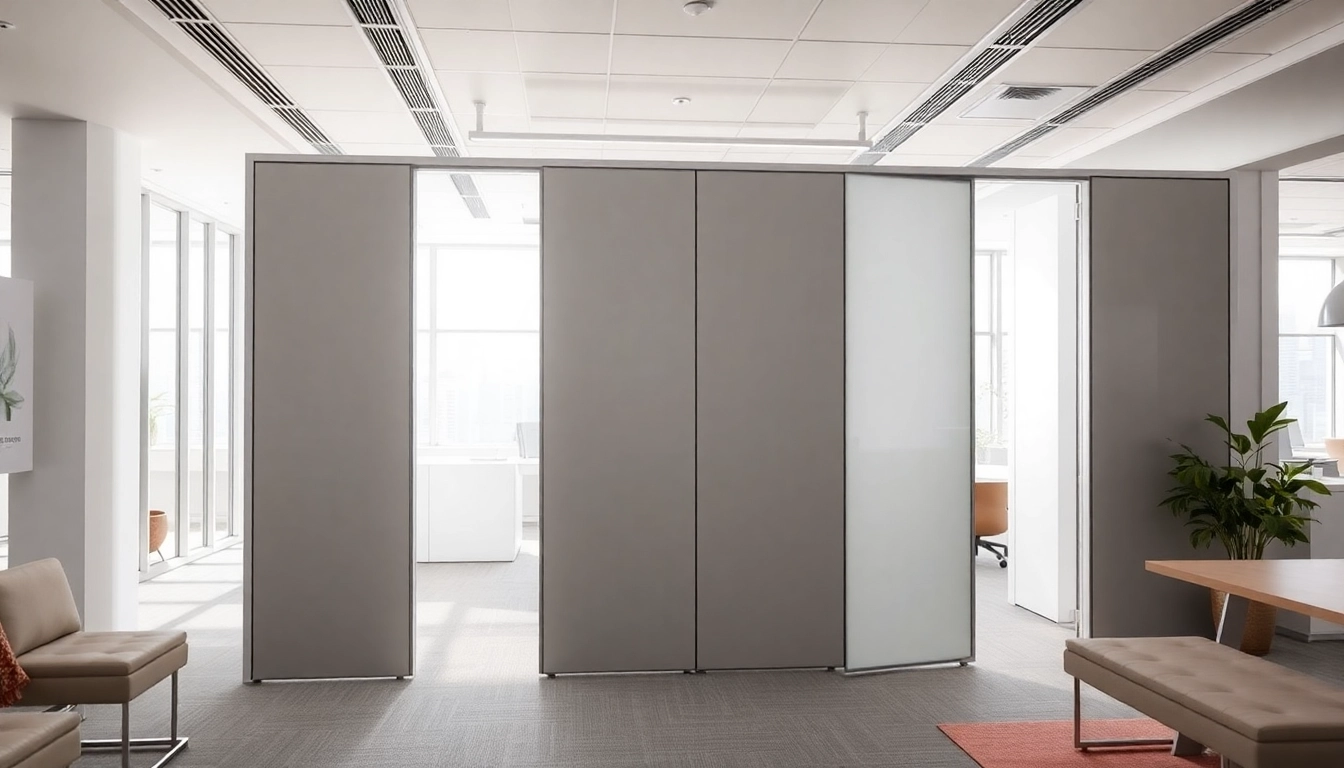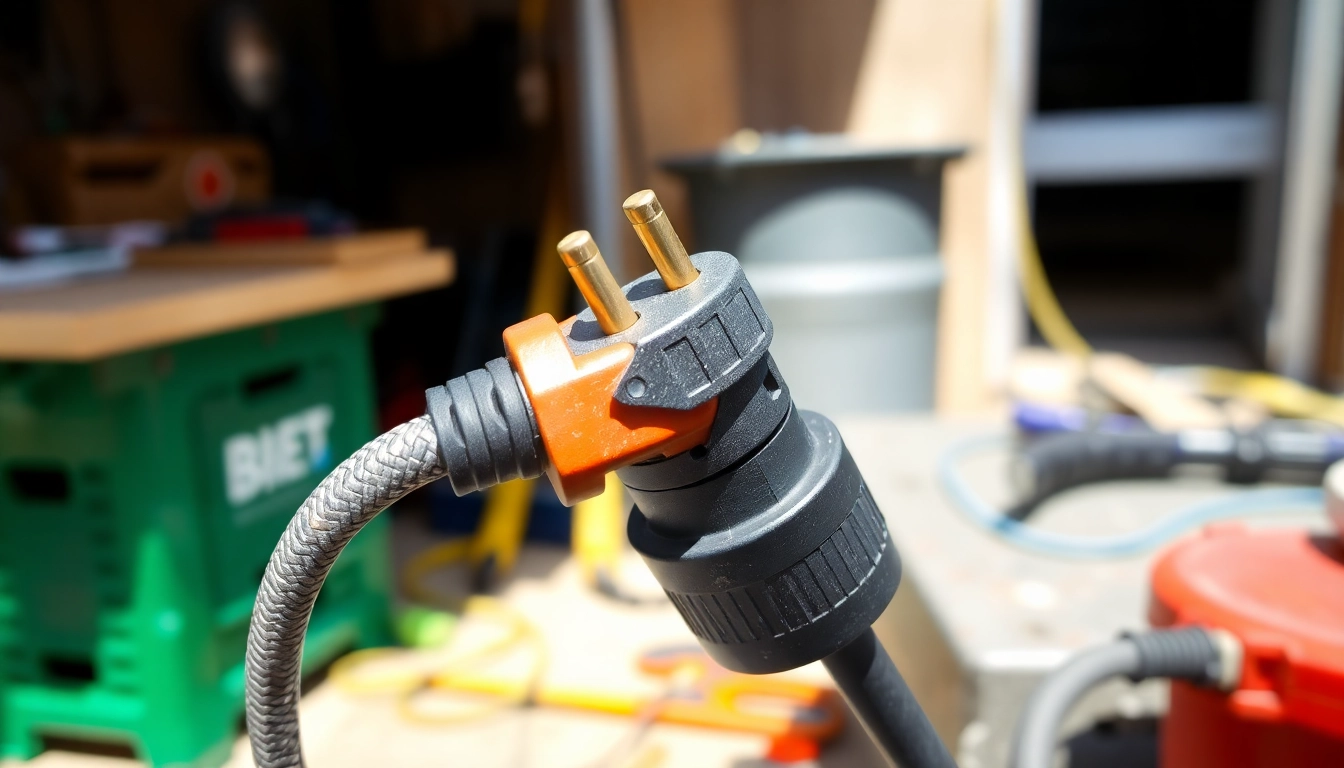Understanding Folding Partition Walls
Folding partition walls have revolutionized the way spaces are utilized, allowing for flexible configurations that can adapt to various needs. These innovative structures can transform an open area into distinct sections, providing privacy, sound control, and aesthetic appeal. Whether you’re looking to create versatile environments in a commercial setting or a cozy area in your home, a Folding Partition Wall can provide the ideal solution.
What is a Folding Partition Wall?
A folding partition wall is a movable wall system that can be easily retracted and extended to create or eliminate divisions within a space. These walls consist of multiple panels connected via hinges or tracks, allowing them to fold neatly when not in use. Typical applications include conference rooms, classrooms, banquet halls, and residential spaces, playing a crucial role in maximizing usable area.
Key Benefits of Using Folding Partition Walls
- Flexibility: Easily reconfigure spaces for different functions, catering to varying numbers of people.
- Sound Isolation: Many folding partition systems come with sound-absorbing materials, providing privacy during meetings or events.
- Cost-Effectiveness: Avoid the expense of renovation or construction by using movable partitions to modify existing spaces.
- Aesthetics: Available in various designs and finishes, these walls can enhance the visual appeal of any environment.
- Space Optimization: Ideal for utilizing space efficiently by creating temporary divisions as needed.
Applications in Residential and Commercial Spaces
Folding partition walls are incredibly versatile, finding applications in both residential and commercial sectors. In homes, they can create private areas for activities like home offices, playrooms, or guest accommodations. In commercial settings, they are ideal for adapting conference rooms, exhibit spaces, and multipurpose areas to facilitate different events and activities.
Types of Folding Partition Walls
Accordion vs. Operable Partition Walls
When choosing a folding partition wall, it’s essential to understand the differences between accordion and operable partition systems.
- Accordion Partitions: These are typically lightweight and easy to operate manually. They usually consist of connected panels that fold in a concertina manner. Ideal for lightweight applications in residential or small commercial settings.
- Operable Partitions: More robust and often used for larger spaces, these walls can be mechanically operated, requiring more intricate installation. They can provide superior acoustical performance, making them suitable for high-end commercial uses.
Materials Used in Folding Partition Walls
Various materials can be utilized in the construction of folding partition walls, influencing both performance and aesthetics. Common materials include:
- Wood: Offers a classic look and warm feel, often found in upscale environments.
- Steel: Durable and resistant to wear, making it suitable for high-traffic areas.
- Acoustic Panels: Designed to minimize sound transmission, essential for environments where noise control is necessary.
- Glass: Provides a modern, elegant aesthetic while allowing light to flow between spaces.
Customization Options for Your Folding Partition Wall
Many manufacturers offer extensive customization options for folding partition walls. These can include:
- Sizes and Dimensions: Tailored to fit specific spaces, ensuring a seamless integration.
- Finish and Texture: Options for different veneers, colors, and textiles to match your existing decor.
- Acoustic Performance: Custom soundproofing features based on the intended use of the space.
- Access Options: Including integrated doors within the partition for easy movement between sections.
Installation and Maintenance of Folding Partition Walls
Steps for Installing a Folding Partition Wall
Installing a folding partition wall involves several key steps to ensure proper functionality and aesthetics:
- Assessment: Evaluate the space to determine the most suitable type and configuration for the partition.
- Preparation: Measure the area accurately and remove any obstructions that may interfere with the installation.
- Mounting: Securely mount the tracks or hinges to the walls/ceiling as specified by the manufacturer’s guidelines.
- Panel Installation: Carefully attach each panel to the tracks or hinges, ensuring they operate smoothly.
- Testing: After installation, test the functionality to confirm ease of operation and sound control.
Maintenance Tips to Ensure Longevity
To maximize the lifespan and performance of your folding partition walls, consider the following maintenance tips:
- Regular Cleaning: Dust and clean the surfaces periodically to keep them looking their best.
- Check Mechanics: Regularly inspect the moving mechanisms for wear and tear, adjusting or lubricating as necessary.
- Address Damage Promptly: If any panels are damaged, repair or replace them quickly to maintain functionality and aesthetics.
Common Installation Challenges and Solutions
While installing folding partition walls can be straightforward, some challenges may arise:
- Misalignment: Ensure accuracy in measurements; misalignment can cause operational issues.
- Difficulties with Mobility: Regular maintenance and checks can prevent issues with panels sticking or not operating smoothly.
- Acoustic Issues: Ensure the panels chosen meet the desired acoustic performance, utilizing soundproofing materials where necessary.
Enhancing Aesthetics and Functionality
Design Considerations for Folding Partition Walls
Design plays a crucial role in the installation of folding partition walls. Consider the following:
- Style: Choose a design that complements the existing decor and architecture of the space.
- Color Schemes: Opt for colors that create harmony with the environment while also providing a sense of separation.
- Textures: Varying textures can add depth and interest, making the partition both functional and visually appealing.
Integrating Technology with Partition Walls
The advancement of technology offers new possibilities for folding partition walls, such as:
- Smart Controls: Integration of electronic systems to operate walls with a simple press of a button.
- Lighting Options: Built-in lighting can enhance the usability of spaces during various events.
- Technology Integration: Options for ensuring the partitions accommodate electrical and technological needs, such as outlets and data connections.
Creating Flexible Spaces for Various Needs
Folding partition walls allow for the transformation of any space to accommodate different functions, such as:
- Meeting Rooms: Quickly adjust room size to match the number of participants.
- Exhibition Spaces: Open and close areas according to the number of exhibits or desired traffic flow.
- Social Events: Create intimate settings for gatherings or break large areas into smaller, more manageable spaces.
Future Trends in Folding Partition Walls
Innovations in Design and Material
The future of folding partition walls looks promising with ongoing innovations:
- Biophilic Design: Incorporating natural elements to enhance wellbeing and connect occupants with nature.
- Modular Systems: Allowing for increased customization and adaptability in various settings.
- Advanced Materials: Development of lighter, yet more durable materials enhancing functionality while reducing environmental impact.
Eco-Friendly Options in Partition Wall Manufacturing
As sustainability becomes increasingly important, many manufacturers are considering eco-friendly practices:
- Sustainable Materials: Utilizing recycled or responsibly sourced materials in production.
- Reduced Waste: Innovations in production processes to minimize the environmental footprint.
The Role of Folding Partition Walls in Modern Architecture
Folding partition walls are pivotal in modern architectural design, offering solutions that align with contemporary needs for adaptability and efficiency. Architects are increasingly recognizing the importance of flexible designs that can accommodate the rapidly changing requirements of residential and commercial spaces.



